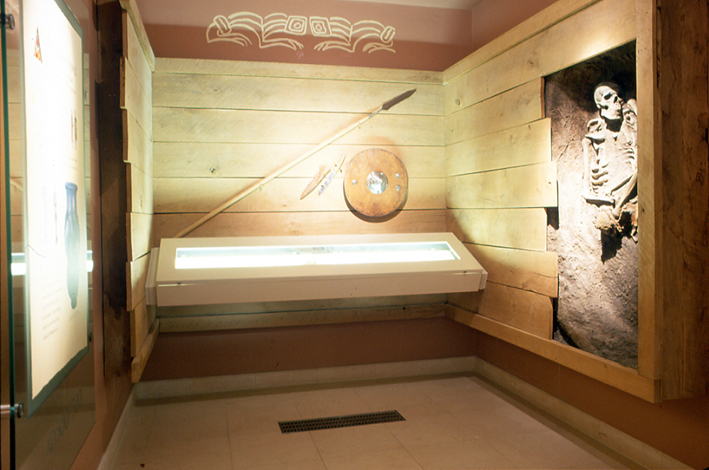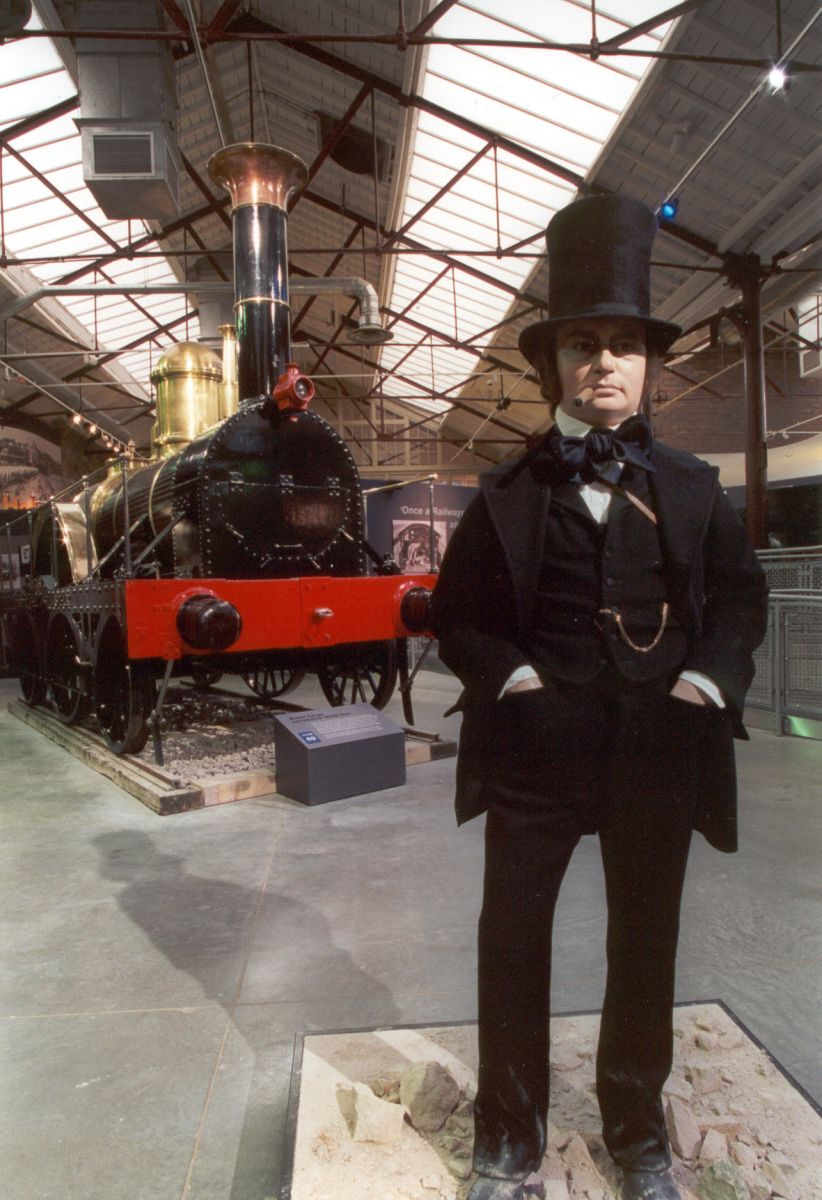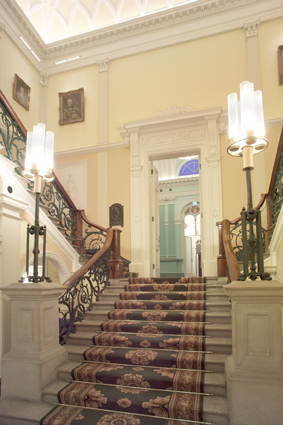
Phone:
+44(0)1935 812447
Mobile:
+44(0)7970 025924
Email:
jb@jb-ld.co.uk

Phone:
+44(0)1935 812447
Mobile:
+44(0)7970 025924
Email:
jb@jb-ld.co.uk

03-08-2015
In the course of a series of seminars to RIBA architects on the current trends in lighting design and technology I’ve been picking up on feedback from the delegates. Something that’s caught my eye is the issue of lighting for conservation – a sub-topic that doesn’t form part of my seminar brief.
Rather than leave everyone in limbo as to what my opinions might be on this subject, here are a few ideas.
 This is that situation where there is a need to provide illumination but the objects and materials that are lit in the process are light sensitive in some way – typically, organic materials such as dyes and pigments, fabrics, wood and paper, resins and so on.
This is that situation where there is a need to provide illumination but the objects and materials that are lit in the process are light sensitive in some way – typically, organic materials such as dyes and pigments, fabrics, wood and paper, resins and so on.
Which just about covers everything apart from glass, stone and metal.
The factors that affect ‘destruction by light’ are threefold:
Taking them one at a time:
By the way: LEDs and Ultra Violet Radiation
There was a scare a couple of years ago when a report into yellow pigment degradation of a Van Gogh painting suggested that LEDs could be responsible for similar destruction. This caused a furore in the LED industry and the report was analysed and revealed to be less than accurate in its assumptions. White LEDs generally contain less UV than fluorescent lighting or natural daylight, which is what we thought – however, it would always be wise to gain specific spectral distribution data on any LED being considered for use in a conservation environment.
Bringing together the levels of illumination and the times of exposure brings us to the odd ‘maximum cumulative exposure’ figure, measuered in Lux-Hours. What this suggests is that an object lit to 500Lux for 10 hours suffers the same amount of damage as if it had been lit at 10Lux for 500 hours. So – you pays your money . . .
Lighting control is probably the best way to resolve this conundrum. Controls can be introduced at three levels:
 if you’re able to control the ambient lighting within a space (which will mean attenuating or removing natural light ingress) then you reduce artificial lighting levels without anyone being aware that you’ve done it. It then becomes easier to control highlighting on display materials.
if you’re able to control the ambient lighting within a space (which will mean attenuating or removing natural light ingress) then you reduce artificial lighting levels without anyone being aware that you’ve done it. It then becomes easier to control highlighting on display materials.
On top of that, it may be possible to limit lighting exposure further by reducing lighting levels when there’s no one to view the displays. This may be difficult to organise on a busy bank holiday Monday, but a wet Wednesday in February is a different matter. Introduce occupation sensors to gallery spaces so that as much of the lighting is reduced as is practically possible. Just don’t have everyone thinking that the gallery is closed!
STEAM: The Museum of the Great Western Railway is located in the old GWR works at Swindon.
This image appears to show the main exhibition space daylit from the (original) factory rooflights, which was a requirement of English Heritage during the planning procedure.
However, for display and conservation purposes it was necessary to reduce the (measured) illuminatio levels of 20,000+ Lux to something more manageable. The rooflights were re-glazd using a proprietary product. that recued visible light transmittance by 99% and UV transmittance by 100%.
This means that the exhibition designers and lighting designer (that was me) were able to work in a far more conducive visual environment where maximum illuminance levels were more likely to be 200Lux and less.
The visual impact of the light attenuation is apparent in the shadow of IK Brunel, behind the figure.

Its difficult for us to imagine how dark ‘the past’ actually was, and films and TV don’t come anyway near it. There is a huge gulf between the way that we use light today and the way in which our forebears used it. Much of this is to do with the extravagant way in which we use energy for decorative and emotional ends whereas in past times light was an expensive commodity and was generally used for one purpose only, that of simply providing enough light for us to see by.
I’ve tried to bridge this gulf by looking again at the way that our old buildings were lit – seeking out the ways that light would play around a building and then attempting a modern interpretation of that light rhythm. And the grander the space, the more obvious it may become as to where that light may have come from.
It also means that I’m moving away from the idea of projected light – this is the kind of light that we get from downlights and spotlights, where light from a source is pushed out of a fixture towards its target, via a reflector or lens arrangement. Too many gorgeous heritage interiors have suffered from this ‘museum’ approach to lighting, and that’s a real shame. I see churches that have been relit by the simple expedient of removing the ‘natural’ rhythm of pendants and wall fittings in favour of groupings of high level spotlighting – at which point the nave may as well be used for cricket practice.
This modern technique presumes sufficient power to push light across distance, whereas in those times past, the flame of a candle or oil light needed to be at the shoulder of the person using it. But what about those magnificent 18th century balls, you ask? Well, consider this: a good old-fashioned 60W light bulb is equivalent to around 600 candles. And how many 60W light bulbs would you need to light a ballroom?
That’s either a hell of a lot of candles – or a not-very-bright ballroom.
And candles were expensive.
The Tudor manor house at Cotehele, on the Devon and cornwall borders impressed me the very first time that I visited. The hall has never been electrified (or gasified, come to that). As naked flames are out of the question, I asked the NT tour guide what happened on dull days, when there wasn't much light to see by; "We send you home".
Lovely.
Well, while candles and oil lights had to be constantly replaced or re-fuelled, at least they didn’t need cables to supply them. Two things create frustration for the designer; getting an electrical supply to locations in a building where every surface may be protected beyond measure - and gaining permission to fix light fittings onto the end of the cables at those locations.
But I guess that’s really where the fun starts.
A (very) basic guide to ethical specification
Lighting design: it's a client thing
Calculating obtrusive light: whose job is it?
When there's nothing in the catalogue
When is a chandelier not a pendant? When its a lantern!
When clients learn too much . . .
One of our details is missing
Where will light fittings come from?
The end of the light bulb?
Always something new . . . again
Always something new . . .
Combining old and new
On being in the dark . . .
Riffing The Internet of Things
PUBLISHED ARTICLES
John Bullock writes a regular column for lighting magazines. You can find all of the archived pieces here.
BLOGS - LIGHTING DESIGN
John Bullock writes about all things and anything concerning architectural lighting design; new technologies and old lamps; anything,really.
HOME LIGHTING CONSULTANT
John Bullock designs innovative lighting designs for people's homes. By working closely with clients he is able to deliver solutions that meet - and exceed - their expectations.
BLOGS - CPD RIBA CORE PROGRAMME 2015
John Bullock will be presenting a seminar on latest lighting design and technologies as part of the RIBA CPD Core programme 2015
BLOGS - SUSTAINABILITY
John Bullock believes that the UK lighting industry needs to embrace a sustainable way of delivering good quality product through good design, fabrication and end-of-life management.
BLOGS - LIGHTING HEALTH AND WELLBEING
Lighting has a vital role to play in our health and wellbeing.

CONDUIT (6) - Lighting for Winter Gardens
CONDUIT 5: Home Lighting - LED Lighting (2)
FX Magazine: Lighting Focus - Sustainability (Issue 258)
CONDUIT 4: Home Lighting - LED Lighting (1)
Can Smart Lighting Save The Planet?
CONDUIT 3: Home Lighting - The Bathroom
Can Lighting Save Us From Ourselves . . . NO!
CONDUIT 2: Home Lighting - The Dining Room
Read More
John Bullock Lighting Design
4 Miller Way
Sherborne
Dorset
DT9 3SG
England
Website designed by Alacrify